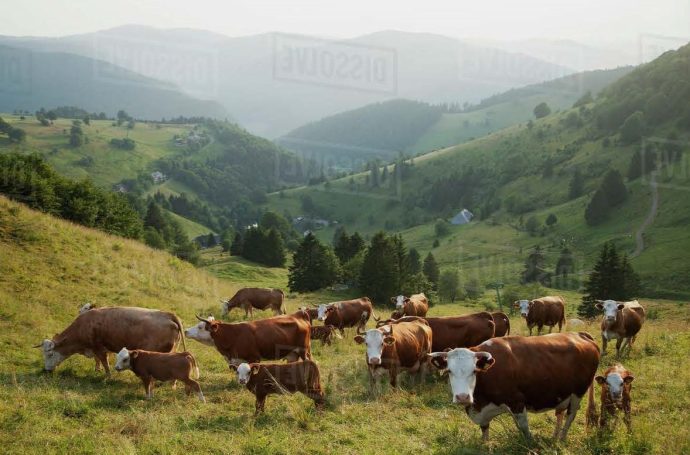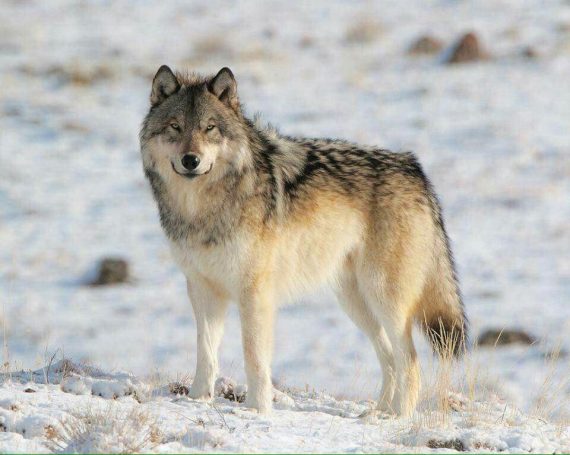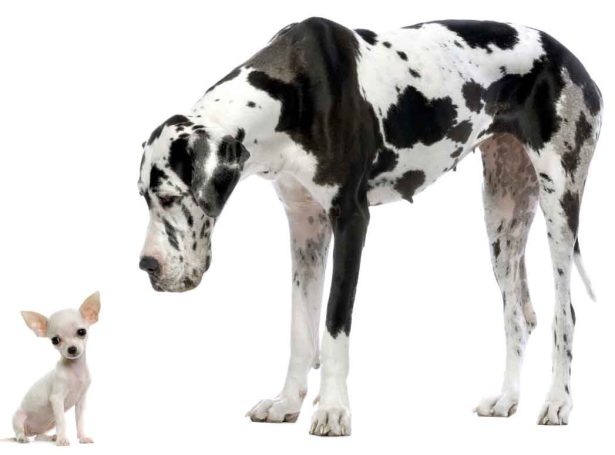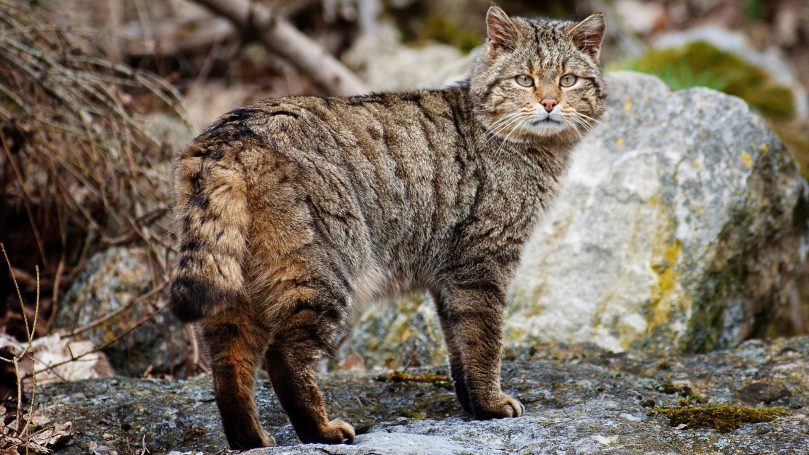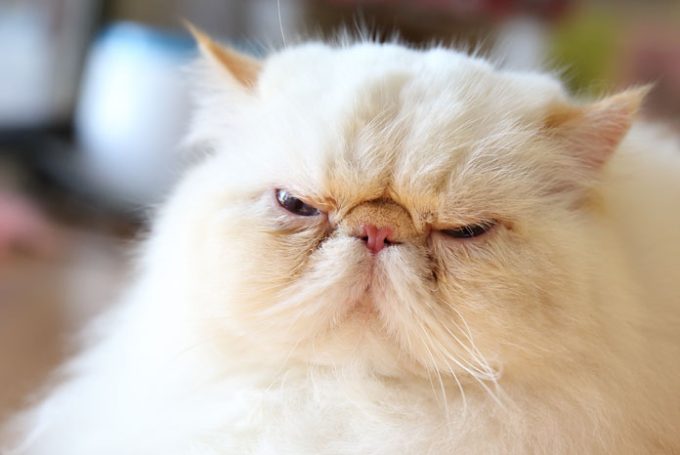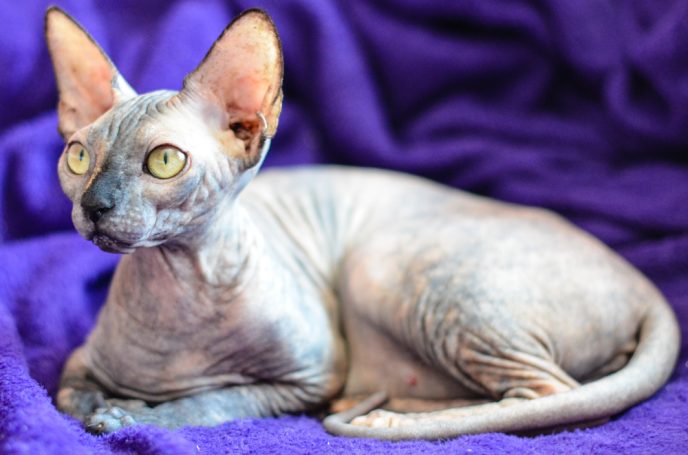ANIMAL WELFARE
Welfare Science: assessment and interpretation
This is a big subject. It must embrace all the physiological and psychological elements involved in the process whereby a sentient animal seeks to cope with the challenges of life and promote its physical and mental wellbeing. Sentient animals undisturbed by human interference and in their natural habitat develop the skills to promote their own wellbeing. Wherever we are involved (i.e. almost everywhere) we have the responsibility, at least, to minimise suffering, contribute to their wellbeing, and wherever possible, offer them physical and psychological resources consistent with a good quality of life. The number and complexity of the issues relating to the welfare of animals within our care are legion. My aim here is to set out a structure upon which to construct an analysis of welfare issues as perceived by them and the actions required of us.
Feelings, cognition and motivation
The welfare of sentient animals is determined by their ability to meet their needs and cope with the challenges of life. They identify these needs and challenges through feelings, interpret them, to a greater or lesser extent through cognition and, if they can, take such action as is necessary to maintain a sense of wellbeing. If they are unable to cope, or have great difficulty in coping, because the challenges are too severe, complex, or prolonged, or because they are in an environment that restricts their ability to cope, they may suffer. If they have time to spare, they may play or seek pleasure in other ways. If this too, is restricted, they may well get bored or depressed. I illustrate this in a from that I like to call David McFarland’s egg.
McFarland's Egg
The animal is motivated to cope with multiple, conflicting needs and challenges (hunger, thirst, heat, cold pain, fear) by moving within its coping zone (shown in green). If the challenges take it beyond the limits it will suffer. If the challenges are too few, it may enter a state of limbo marked by boredom and frustration.

ANIMAL WELFARE IN PRACTICE
Domestication
This section, Animal Welfare in Practice, considers animal welfare as our concern. ‘Man has dominion over the animals whether we like it or not. Wherever we share space on the planet, and this includes all but the most inaccessible regions of land, sea and air, it is we, not they, who determine where and how they will live.’ (Webster 1994). Our most demanding duty of care extends to the (relatively few) species that we have managed to domesticate to suit our own devices and desires: for food, for work, for science, for entertainment, for companionship and love. To serve these ends, we control their breeding, their feeding, their physical and social environment.
Breeding
Breeds are a human concept, artificial by definition. We select traits that prioritise our needs over those best suited to promote survival of the fittest through natural selection. We distort the natural shape, growth rate and milk production of farm animals to meet our appetite for food. We manipulate the size, shape and appearance of our pets to suit our own concepts of beauty and fashion. The further we depart from the natural phenotype of the species, the greater the risk to welfare.
Physical needs
Since most people value their domestic animals (for one reason or another) we address their physical needs for proper food, satisfactory accommodation, security, health and hygiene. Most domesticated animals are likely to have an easier life than those in the wild. However, the ways by which we address their physical needs may differ radically from the ways that animals are motivated to act for themselves. We feed meals at intervals of our own choosing and neglect the natural motivation of species to hunt or forage. We confine animals in accommodation designed largely for our own convenience. We use blanket medication to address health risks from overcrowding. All these things have the potential to threaten the physical needs of the animals for comfort and security and deny them the freedom of choice to achieve these needs through their own actions.
Emotional needs
Sentient animals are motivated by their feelings. Nearly all animals that have adapted to domestication are from social species, accustomed to life among others of their own kind. While the physical environment for many farmed animals may be less than satisfactory, those that live in colonies should, at least, understand one another. Socially minded animals, like horses, that are denied the company of others of their kind may develop signs of depression or chronic anxiety, such as stereotypic behaviour. Dogs that spend nearly all their time in human company may struggle to adapt, especially when our attempts to communicate with them may involve a bewildering variety of conflicting and confusing messages. It is a disturbing fact that, of all the domesticated species, those that show the greatest incidence of behavioural problems are two of those we love the most: dogs and horses.
Sentient animals undisturbed by human interference and in their natural habitat have developed the skills to promote their own wellbeing. Wherever we are involved (i.e. almost everywhere) we have the responsibility, at least, to minimise suffering and promote their wellbeing. Wherever possible, we should offer them the physical and psychological resources consistent with a good quality of life. The number and complexity of the issues relating to the welfare of animals within our care are legion. My aim here is to set out a template upon which to construct an analysis of welfare issues as perceived by them and the actions required of us.
The Five Freedoms and Provisions
These set out their needs and our responsibilities in relation to animals in our care.
Freedom from hunger, thirst and malnutrition -by ready access to fresh water and a diet to maintain full health and vigour.
Freedom from thermal and physical discomfort – by providing a suitable environment including shelter and a comfortable resting area.
Freedom from pain, injury and disease - by prevention or rapid diagnosis and treatment
Freedom from fear and distress -by ensuring conditions that avoid mental suffering
Freedom of choice - by establishing an environment wherein animals can make a constructive contribution to maintaining their physical and mental wellbeing.
As set out here, they differ from my original proposal, adopted by the Farm Animal Welfare Council (1993). Freedom of choice, replaces Freedom to express normal behaviour. The Five Freedoms are, by definition, outcome measures of welfare state, resulting from inputs: provisions largely controlled by us. An alternative approach to the analysis of animal welfare, the Five Domains, has been proposed by Mellor (2016). This describes four input domains that, together, determine a single outcome domain, mental state.
A highly simplified and somewhat modified version of the Five Domains is given below.
_________________________________________________________________________________________
_______________________________________________________________
Inputs Outcome
Physical & social resources mental state
bad------ adequate------- good suffering-------contentment-------pleasure
_______________________________________________________________________________________________
nutrition malnutrition fitness gourmet
physical environment thermal stress comfort hedonism
health provision disease fitness vigour
social environment distress security happiness
_______________________________________________________________________________________
The quality of the four input provisions, nutrition, physical environment, health provision and social environment may range from very bad, through adequate to luxurious. Separately and together, these will influence the mental state of the animal across the full spectrum from suffering through satisfaction to pleasure, described here in justifiably emotional terms. This approach offers more than the Five Freedoms in two respects. It permits the question, 'is this a life worth living’. It also gives a more complete set of foundations upon which animal behaviour and welfare scientists can construct their analyses.
Here I present a structure for analysis of the impact of management on welfare in sentient animals as defined by physical and mental state that combines the simple set of rules set out by the five freedoms and provisions with the interpretation made possible by the five domains. It recognises four categories of provision and explores their consequences in relation to the following broad categories of physical and mental welfare.
- Feeding: nutrient supply, digestive health and oral satisfaction.
- Physical environment: .comfort, rest, maintenance behaviour
- Health provision: freedom from injuries, infectious and metabolic diseases
- Social environment: security, choice, social behaviour, mental wellbeing.
Examples of potential problems and their consequences are shown in the table below.
_________________________________________________________________________________________________________________
Provisions Potential problems Consequences
______________________________________________________________________________________________________________
Feeding prolonged hunger and thirst anxiety - depression
digestive disorders pain, malaise
metabolic imbalance exhaustion
oral stereotypes
Physical environment unsuitable resting area restricted movement
inadequate time for rest discomfort, depression, exhaustion
Thermal environment heat, cold discomfort, exhaustion
Health provision acute and chronic injuries pain
infectious and metabolic diseases fever, malaise, death
Social environment disturbed social behaviour fear - distress
aggression injury and death
inappropriate human contact anxiety - depression
,
_______________________________________________________________________________________________________
Farm Animals
We farm animals to supply us with resources. These days, this almost entirely means food.
We slaughter animals for meat, we distort natural selection to get milk and eggs. We confine these animals for our own convenience. However, it is vital to their own interests that producers feed their animals properly and minimise risks to their health. Moreover, farm animals, social species, are usually given the reassuring presence of their conspecifics, though usually not in a milieu that they would choose. The adage ‘for the first six months, the farmer feeds the pig: for the next six months the pig feeds the farmer’ may be a cynical expression of the social union but it is a fact of life. Farm animals have value. Farmers have a financial imperative to ensure their economic value by ensuring their health and productivity. Those who rear them and those who feed from them have an equal moral imperative to ensure that the value of these sentient animals is defined not only by the sale of their produce but also by the quality of their life and the manner of their death.
Welfare problems
Here, I use the model for analysis of Provisions, Problems and Consequences to explore potential welfare problems for farm animals and rank them according to my personal assessment of their importance based on current evidence as to their incidence and severity. I have limited my analysis to three species, cattle, pigs and poultry. Nevertheless, I believe the model permits a comprehensive approach to the analysis of provisions, problems and consequences in all farmed species.
Try it. Select a species and a management system, set out the template and fit problems into the boxes. If you discover a problem that doesn’t fit, please let me know.
For more evidence and in-depth analysis see The Management and Welfare of Farm Animals (Webster and Margerison 2022) .
Cattle: Dairy, Beef and Veal
Since the earliest days of agriculture, cattle have been one of the greatest assets to the human race. Traditionally, the house cow and her immediate family were valued for their ability to produce milk (in all its forms), work, fuel (from dung), clothing, footwear and (as a final resort) meat, from food that we could not digest for ourselves, grazed from land that we did not own. In some parts of the world, this situation still exists but most meat and dairy produce today comes from specialised, large-scale enterprises.
The tables that follow address the major welfare risks attached to the different systems of cattle production.
Dairy cows

Intensive: housed throughout lactation
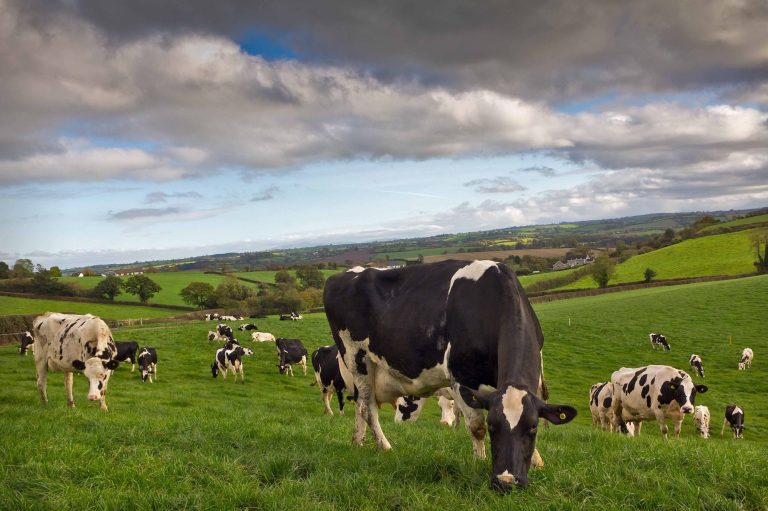
At pasture
RIsks, Pasture
Risks, intensive
unlikely
high
moderate
moderate
moderate
high
low
high
low
low
low
minimal
possible
rare
low
low
low
low
occasional
moderate
low
occasional
low
minimal
Potential problems
Feeding
hunger and thirst
digestive disorders
metabolic disorders
Physical environment
unsuitable resting area
restricted movement
inadequate time for rest
weather stress
Health provision
lameness, other injuries
infectious diseases
parasitic diseases
Social environment
aggression
abnormal behaviour
Beef and Veal production systems
1. Beef from suckled calves reared by their mothers, finished at pasture
2. Beef from suckled calves, finished intensively on feedlots.
3. Beef from calves from the dairy herd, early weaned and reared semi-intensively
4. White veal: calves from the dairy herd reared principally on liquid diets
5. Pink veal: calves from the dairy herd reared intensively on liquid and cereals.
Beef cattle at pasture 'White' veal calves Feedlot beef
______________________________________________________________________
Potential Problems Risks, Beef Risks,Veal
suckled dairy beef white pink
to pasture to feedlot
___________________________________________________________________
Feeding
hunger and thirst rare minimal minimal low low
digestive disorders rare high moderate high moderate
metabolic disorders low low low low low
oral stereotypies minimal low rare high moderate
Physical environment
unsuitable resting area low moderate low high low
restricted movement minimal moderate minimal high low
inadequate time for rest ---------------------------------------minimal----------------------------------------------
abnormal behaviour ---------------------------------------minimal-------------------------------------------------
weather stress low possible low --------minimal--------
Health provision
respiratory disease low high moderate high high
enteric disease low moderate low high moderate
lameness, injuries low moderate low low low
Social environment
aggression --------------------------low-------------------------- -------minimal---------
abnormal behaviour ------------------------low-------------------------- high moderate
_________________________________________________________________________________
The main conclusion to be drawn from these tables is that the major welfare problems for cattle derive from the production systems that we impose on them. High yielding dairy cows are primarily at risk from digestive and metabolic disorders (and related conditions like lameness) arising from the feeding systems necessary to support high milk yields. Beef cattle stocked at high density in barns or on feedlots are at high risk from respiratory diseases. The welfare of calves reared in individual crates on liquid feeds for the production of white veal is bad according to all the five freedoms (This system is now prohibited in many countries and states). The quality of life for suckler cows and their calves at pasture can be close to idyllic.
Pigs
In their natural state, pigs are hardy, omnivorous, forest dwellers that form stable family groups but can be aggressive to outsiders. New-born piglets are very vulnerable to cold and to predators, so sows work to ensure that they give birth in warm, safe nests. Commercial pig producers have for many years sought engineering solutions to problems of intensification such as piglet mortality, aggression and infectious disease by constructing farrowing crates and pregnancy stalls for sows to eliminate potentially harmful social interactions. The drivers for the intensification and mechanisation of pig production were increased productivity, reduced costs and labour. Performance (reproduction and growth) was widely accepted as the marker for good welfare. The behaviour and mental wellbeing of the pigs were largely ignored. ‘Remedies’ for problems associated with aggression and infectious disease were isolation and antibiotics. In recent years there has been a movement towards more extensive, outdoor systems, driven by public opinion, welfare legislation, problems of infectious diseases and a fuller understanding of the need to address all five freedoms.

Sows, Gestation crates
Sows kept in isolation without bedding and access to food for most of the time. Some units use tethers.
This system has now been banned in UK, the EC and many states within the USA

Sows, Straw yards
This unit includes free stalls that sows can enter for feeding and escape aggression
Problems Risks
__________________________________________________________________
Potential problems Gestation stalls Group housing
Feeding problems
hunger and thirst high low
oral stereotypies high low
Physical environment
unsuitable resting area high minimal
restricted movement high minimal
abnormal behaviour high minimal
Health provision
infectious diseases low low
Social environment
aggression impossible low
abnormal behaviour high low
__________________________________________________________________
_______________
Sows, Farrowing Accomodation

Farrowing crates
To prevent crushing of piglets, sows are confined to the extent that they can do no more than stand up or lie down.
Heat lamps are provided above a creep area for the neonatal piglets

Outdoor farrowing ark
Sows can forage and construct a deep bed of straw that protects piglets from crushing or hypothermia
Piglets in the fresh air are much less liable to suffer from respiratory diseases
Problems Risks
--------------------------------------------------------------------------------
Potential problems Farrowing crates Outdoor arks Sows Piglets Sows Piglets ---------------------------------------------------------------
Proper feeding hunger and thirst moderate low low low oral stereotypies high minimal --------minimal------------
Physical environment unsuitable resting area high moderate low low
restricted movement high moderate --------minimal-----------
abnormal behaviour high minimal ---------minimal-----------
thermal stress low low low low
Health provision
infectious diseases moderate moderate low low
Social environment
aggression impossible low low low
abnormal behaviour high low low behaviour stress high low low low
---------------------------------------------------------------------------------------------------------------------------------------
Growing pigs

Perforated floors
High stocking density on pens with perforated floors in heated buildings

Straw yards
Ample straw beddng. Pelleted feed can be spread through the straw to permit foraging.
------------------------------------------------------------------------------------------------
Problems Risks
Perforated floors Straw yards
------------------------------------------------------------------------------------------------
Proper feeding
hunger and thirst high low
oral stereotypies high low
Physical environment
unsuitable resting area high low
restricted movement high low
abnormal behaviour low low
thermal stress low low
Health provision
enteric diseases moderate low
respiratory diseases moderate low
Social environment
aggression high low
abnormal behaviour high low
-------------------------------------------------------------------------------
-
Summary
Where there is good husbandry in outdoor and other less intensive management systems, fears of problems associated with piglet mortality, aggression, reduced growth rates and increased feed costs have proved largely unfounded. Aggression can be low in enriched environments where pigs have ample space and plenty to occupy their time. Feed pellets scattered in straw yards will not be fought over and all will be found. Thermal comfort can be achieved with suitable shelters and drainage. The answer to farmers who say ‘I could not keep pigs outdoors, the land is too wet’ is ‘In which case yours is not a pig farm’.
Poultry
Laying Hens
Commercial layers of today are descended from jungle fowl motivated to forage throughout the day for seeds, insects etc., protected from aerial attack by the undergrowth, then roost in elevated perches by night safe from attack from the ground. Village hens today do much the same. The ‘great leap forward’ in the intensification of egg production was to confine hens in barren cages at the greatest possible stocking density. The gains for the industry were achieved through increased productivity: control of feeding, the thermal environment, waste disposal, and exposure to infection. The costs for the birds were denial of almost all behaviour consistent with physical and mental wellbeing. The image of the ‘spent hen’, featherless and enfeebled at the end of one laying season has been perhaps the greatest single symbol of the inhumanity of factory farming and motivator of public demand for change.
The barren cage is now banned in many parts of the world and more will follow. Commercial alternatives include enriched cages, group housing within barns and ‘free range’, where hens are confined in barns overnight, for feeding and early morning egg laying. The pop holes are then opened and the birds can spend the time indoors or out, as they wish. The attraction of outdoors is enhanced by the provision of overhead cover (shrubs, etc) to give added security.

Barren Cage
400-550cm2 per bird

Enriched Cage
min 750cm2 per bird
perches, nest boxes
scratching/dust bathing area

Free range with arks
hen's use of outside range depends on perceived security. Overhead cover (shrubs etc.) preferable (not shown here)
Potential problems Cages Barn Free range barren enriched ________________________________________________________
Feeding problems low low low low
Physical environment unsuitable resting area moderate low low low restricted movement high moderate low low behaviour stress high low occasional low thermal stress low low low low
Health provision infectious diseases low low low occasional external parasites low low moderate moderate injury -----------------------moderate------------------------------------
Social environment aggression low occasional moderate moderate behaviour stress high low moderate low ____________________________________________________________________-
Well designed enriched cages can address most of the behavioural needs of hens while retaining control of feeding, housing and injurious interactions but public opinion (and the economic consequences thereof) favour more natural colony systems in barns, preferably with access to free range. These systems carry risks, both intrinsic (severe aggression) and extrinsic risks (bird flu epidemics) and call for high standards of husbandry. However, in our major survey of |RSPCA-approved free-range systems, (Whay et al 2007) the health and welfare of hens on nearly all units was excellent.
Broiler chickens
The unplanned purpose of natural selection in animals is to ensure fitness of the individual and thereby the fitness of the species. It is a sick travesty of the Darwinian principle in that the broiler chicken reared for meat production may claim to be the most successful of birds. The current international broiler population exceeds 30 million. Given an average life span of 40 days this equates to a birth rate of over 200 billion birds per annum. This success has been achieved by the unnatural selection of birds to eat seeds and grow meat at a rate that is incompatible with fitness. The most rapidly growing strains of birds can suffer ‘leg weakness’ a euphemism for crippling lameness and contact sores from lying too long in dirty straw. Birds kept on ad libitum feeding for longer than their allotted life span of 40 days or less are increasingly prone to sudden death from cardio-respiratory failure.
In response to public pressure, broiler breeders have developed slower growing strains selected to achieve slaughter weight at about 10 weeks. These birds, which carry a premium price are largely free from the crippling disorders of fast-growing strains and thrive in organic and free-range systems. The greatest abuses to the welfare of broiler chickens, and their remedies are in the hands of the international breeding companies.
Companion Animals
Dogs
Physical problems. Since the first wolves chose to be domesticated and evolved into dogs, humans have done more to distort the size, shape, telos and fitness of this species than any other. For many years, breeds were selected for functional purposes: hunting, guarding, shepherding, and this was consistent with fitness. More recent selection has favoured visual appeal (‘cuteness’), novelty and fashion. While these aberrations of what constitutes a proper dog have, for the most part, managed to retain their doggy character, far too many suffer physical problems (respiratory distress, skin and eye conditions, skeletal abnormalities) directly attributable to the size and shape that we have imposed on them through unnatural breeding.
DIstorting the phenotype
From this ----------------------------- to this ------------------------ and this
Emotional problems. We love our pets but love is not enough. We need to understand them. All animals with sentient minds, and especially the social species, have excellent powers of communicating information and emotions through sight, sound, smell and touch. The nature of these social skills varies from species to species but the messages they convey are uncomplicated by the complexities of human language. This presents special problems for dogs, descended from wolves conditioned by natural selection to defer to and obey the leaders of the pack. Most behavioural problems in dogs can be attributed to misunderstandings, typically perceived human actions that are interpreted by the dogs as rewards for bad behaviour.
Cats
Physical problems. Cats, naturally solitary animals, adapted to domestication on their own terms. These include their own choice in mate selection. In consequence, they have largely succeeded in retaining the form and fitness of the natural phenotype. There is now a fashion for ‘designer’ cats that are not only unfit but, to my mind, dreadful in appearance.
Emotional problems. Cats are free spirits, largely spared the emotional problems of dogs because they have no innate desire to please. Dogs have owners, cats have staff. Freedom, however, carries its own cost. The powerful, persistent motivation of cats to breed is such that I believe it to be in the welfare interests of the individuals and the species to neuter those not required for breeding to let them relax in their freedom.
From this --------------------------------- to these
Horse
Horses are highly social grazing animals with small stomachs that obtain most of their nutrients through fermentation in the hind gut. They have adapted to life in herds, grazing fibrous grass for upwards of 12h/day. They will run together, sometimes to escape predators, sometimes for fun. When we assume control we make the decisions as to their breeding, feeding, environment and behaviour. Breeding horses is generally consistent with fitness because it is based on selection for performance, To confine and isolate an animal adapted to graze for long hours in a stable and feed it a mixture of hay and cereals once or twice daily can compromise its physical and emotional needs. Training a horse to perform for our sport or entertainment may compromise its welfare if the training methods involve physical stress or conflict with its natural motivation to behaviour.
Potential problems include:

Improper feeding:
Colic, Stomach ulcers, Oral stereotypies (crib biting and wind sucking)
Housing:
Movement stereotypies (weaving and box walking)
Training: The traditional process of ‘breaking in’ a horse was designed to establish dominance, using fear to induce a state of submission. The Monty Roberts technique of ‘joining up’ is based on an understanding of the sentient mind of the horse. It creates a good working relationship between horse and human through use of the natural visual signals (no whispers!) whereby young horses establish their position within the herd.
Whips
Use of the whip in racing: There are strict controls on their design and use, and these controls have been getting stricter over time.

Dressage bridles
Design and fitting are such as to facilitate the rider’s control over the ‘unnatural’ posture of the head and the movements required for dressage. Very tight nosebands and some bits are known to cause discomfort and injury

Debate: Horse racing and dressage are competitions between riders not horses and operate under strict rules. Betting on horse races is also a human pursuit in which all parties seek to make money. If races were run without whips, the best horses would still win (within the new rules) and the attractions (and odds) of betting would be unaffected.
Dressage has been called ‘the perfect demonstration of the marriage of minds between horse and rider.’ There is increased interest in ‘bitless and bareback dressage.’ This look like a more equal marriage.
SOLUTIONS
L
Time makes more converts than reason’ Thomas Paine
My approach to all matters of animal welfare has been to seek solutions through right action enshrined by our duty of care. Right action depends on right thought; a blend of compassion and understanding, the emotional and cognitive elements of a sentient mind. In the Ethics section I introduced two timeless principles of morality: Beneficence (the Categorical Imperative) and Autonomy (the Golden Rule) and illustrated how these may be applied to the analysis of practical issues of animal welfare. (Ethical Matrix). These principles may be timeless but, like the Five Freedoms, they describe perfect states (Eden) that we can never achieve, merely limp towards. Our notions of what is reasonable and acceptable evolve with time. They become enshrined in laws, but laws are not the leaders. In matters of animal welfare they evolve, like all natural phenomena, through adaptation to the environment.
Drivers of change
Increased awareness: arising from enlightened individuals such as Ruth Harrison, who challenge our concepts of acceptable behaviour.
Public demand: pressure of public opinion.
Knowledge and understanding: dissemination and recognition of careful and unbiased accumulation of scientific and other evidence.
Images and the Sentient Mind
Feelings. An image may be worth 1000 words but feelings alone are not enough
Understanding: requires a compassionate interpretation of knowledge, old and new, based on reliable evidence.



Actions for Change
We are the moral agents; the animals (and the living environment) are the moral patients (ethical matrix). It is our duty to develop our awareness, our compassion and our understanding of what is necessary for the wellbeing of animals in our care. The good news is that, on the whole, we are getting the message
We have several tools at our disposal.
.Legislation and Regulations. The aim of legislation should be to achieve justice by application of the principles of beneficence and autonomy to all parties. Regulations interpret the demands of legislation. For legislation to be effective it must be enforced. The Animal Welfare Act (UK) 2006 sets out legal requirements in relation to our duty of care to ‘protected animals’ and provides links to more specific legislation and codes of practice. Previous legislation (e.g. Protection of Animals Act 1911) made it an offence to ‘cause unnecessary suffering by doing or omitting to do any act’. The Animal Welfare Act 2006 goes further. It states ‘A person commits an offence if he does not take such steps as are reasonable in all the circumstances to ensure that the needs of an animal for which he is responsible are met to the extent required by good practice’. In other words, it is now not only an offence to cause suffering through cruelty or neglect, it is an offence to feed, breed or house animals in such a way that there is a reasonable probability that suffering may occur. This law has yet to be put to the test, especially in the context of breeding that impairs the welfare of some farm animals (e.g. poultry) and pets (e.g. pugs).
Animal Welfare laws are essential but limited in scope. They can never be more than a compromise and do little more that define minimum standards for acceptable husbandry’.
Welfare Codes of Practice
Good husbandry, the management and welfare of animals and the living environment, is a process of lifetime learning. Codes of Practice for the welfare of farm animals and pets do no more than set out minimum standards ‘to comply with Section of the Animal Welfare Act 2006. They offer guidance to those who interpret the law but little else.
Farm Animal Welfare: Assessment, improvement and promotion
Public opinion and the needs of the animals require us to do more than simply conform with minimal welfare standards defined by legislation. An increasing number of producers are recognising the ethical and economic For attractions of operating to higher standards
Schemes such as Red tractor and RSPCA assured, (formerly Freedom Foods) set out standards for good husbandry and protocols for their surveillance by independent assessment. Inspection protocols are designed to address key measures of provision (husbandry) and outcomes (welfare). Protocols such as these are described in detail in the UFAW Management and Welfare of Farm Animals (Webster and Margerison 2022)
A series of comprehensive protocols for the assessment and evaluation of farm animal welfare standards has been proposed by the pan-European Welfare Quality ® programme. This sets out a series of 4 principles and 13 criteria. The four welfare principles are essentially the same as the Five Freedoms. The thirteen welfare criteria are a practical set of outcome measures for use in surveillance.
____________________________________________________________________________________
Welfare principles Welfare criteria ____________________________________________________________________________________
Good feeding absence of prolonged hunger absence of prolonged thirst
Good housing comfort around rest thermal comfort ease of movement
Good health absence of injuries absence of disease absence of pain induced by management procedures
Appropriate behaviour expression of social behaviours expression of other behaviours good human-animal relationship positive emotional state
_________________________________________________________________________________
Information gathered from assessment of a range of specific measures relating to the13 welfare criteria may be directed to all interested parties, producers, retailers and consumers. Specific indicators of the welfare criteria, immediate and potential problems are directed to the producer. Broader conclusions as to the four principles of welfare state can be addressed to all parties, producers, retailers and consumers. Farms may be given an overall assessment as unclassified, basal, good or excellent.
The proposal to rank (or score) farms according to their standards of welfare has the attraction that it encourages producers to do better than simply conform with regulations and receive a reward for their efforts. However, it is also difficult, and probably misleading, to give an overall ranking when different principles receive different scores. The approach has also been criticised by many producers as being too complex, bureaucratic and time consuming. The approach is scientifically and ethically sound but probably too elaborate to become standard practice.
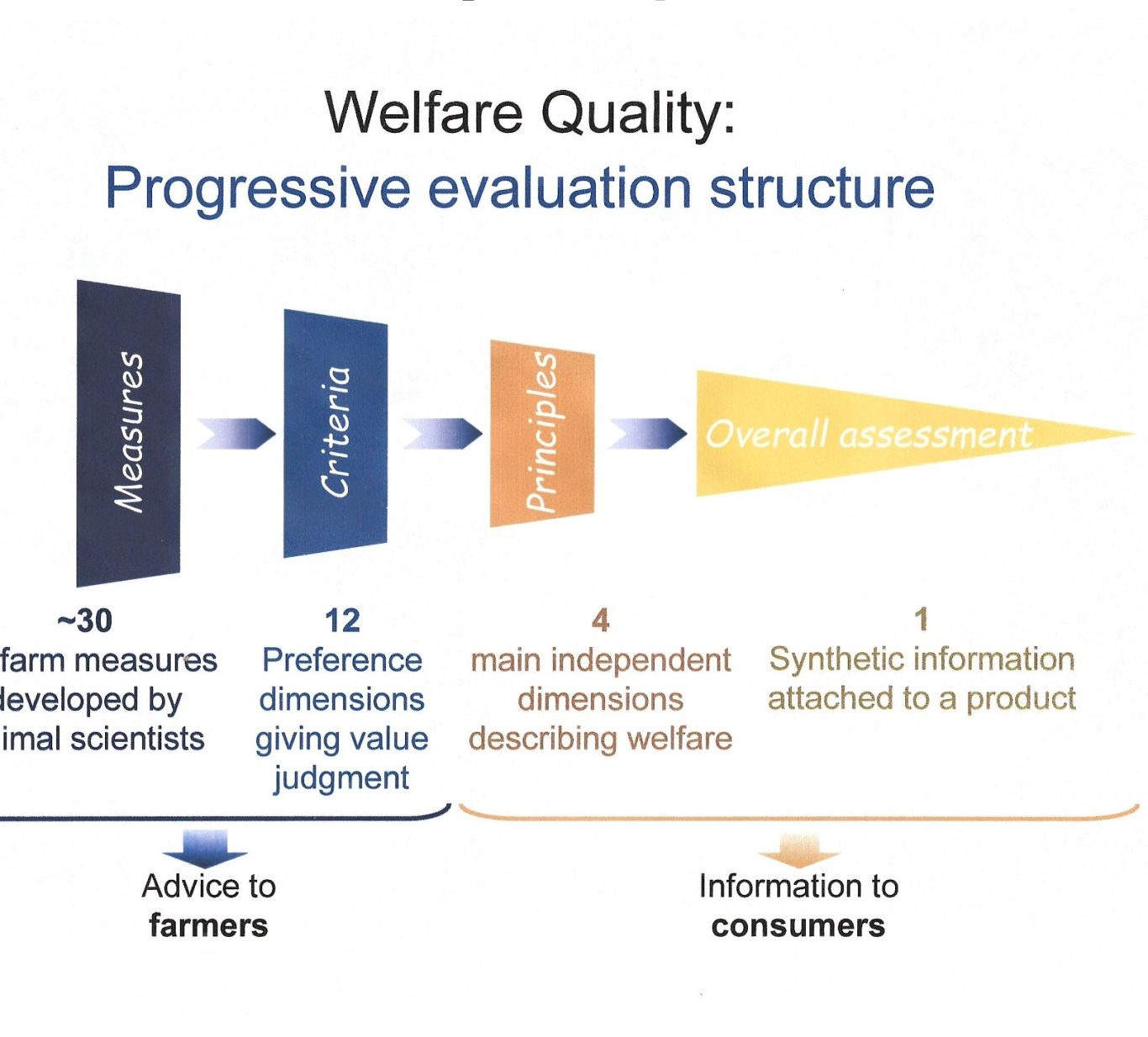
Adding Value through improved Welfare
A Quality Assurance Scheme for products from farm animals should aim to meet the needs of four equally important groups: producers, retailers, customers and the animals themselves. Such a scheme should: incorporate independent protocols for quality control based on comprehensive, proven procedures for assessment of welfare
- have available detailed evidence of inspection procedures and outcomes for retailers and customers who wish to confirm the comfortable words appearing in promotional material.
- be farmer-friendly: minimise bureaucratic box ticking and reinforce any criticism or complaint with constructive advice.
- reward producers and retailers by adding value to products and husbandry systems that promote higher welfare standards than those required simply to conform with statutory Codes of Practice.
To this end, I have proposed (Webster 2009)
The Virtuous Bicycle
The aim of the Virtuous Bicycle is to progress in the direction of higher welfare standards for farm animals through simultaneous cycling of the two wheels, the producer and retailer cycles. The producer cycle begins with written self- assessment from the producer of elements of provision (feeding, health, housing management). The producer should also draw attention to any specific welfare concerns and steps taken to address these concerns. The next stage is a visit by a trained independent assessor. This will include a review of the self-assessment and an inspection of the animals and facilities. The assessor’s report will rank welfare according to the four principles (or five freedoms) and identify specific areas where it is desirable or necessary to improve provisions. The farmer, after discussion with an independent advisor (e.g. a vet.) prepares a written response that includes a prioritised plan for action where necessary. After an appropriate interval (e.g. one year) the cycle resumes (self-assessment – inspection - reaction). Successive cycles will concentrate on the priorities and should become less time consuming
The attractions of this approach are:
- It is based on selection of a balance of criteria of provisions and outcomes; whichever is most appropriate.
- It recognises that the producer and other workers who see the animals on a daily basis are best informed as to the current state of provisions and outcomes
- It ensures that these provisions and outcomes are challenged by independent competent assessors
- It minimises bureaucracy by allowing producers to focus on the things that matter most.
The Retailer Cycle is driven by proof of compliance with the standards of the scheme. This ensures that Quality Assurance is guaranteed by Quality Control. Retailers catering for niche markets can draw attention to individual farms that have been given an excellent rating.
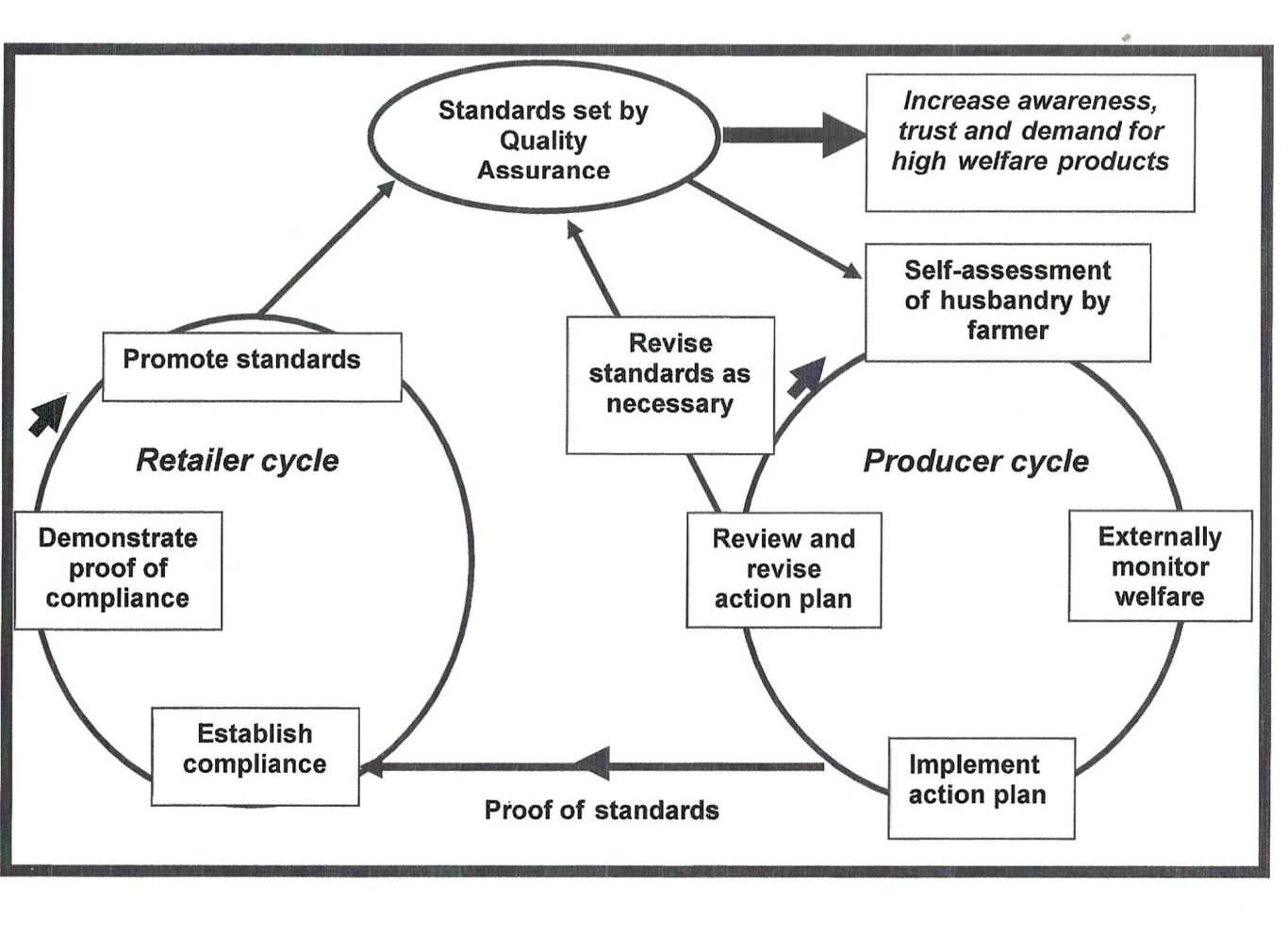
LIFE, THE UNIVERSE AND EVERYTHING
‘The only people who believe in a policy of continuous growth are economists and lunatics.
David Attenborough (?)
In this webcast I try to condense my thoughts and experience of animal sentience and animal welfare within the overall principle of Reverence for Life while constrained always by the facts of life. The most inescapable is Darwinian: survival depends on adaptation to the environment, where adaptation is achieved by securing your own genetic inheritance without disturbing an ecosystem sustained by a balanced process of generation, growth and decay of all life forms within the system. The coming of the second agricultural revolution, made possible through pesticides, antibiotics and fossil fuels, has conspired to persuade the human species that we can escape this constraint, but ultimately we can't - and if we fail we shall bring a great deal crashing down around us.
A major threat to sustainability is that far too much of the food eaten by too many of us is of animal origin. Such food is nutritious and undeniably tasty but a major reason is that so much of this food (especially poultry and pig meat) has been mass produced by intensive methods and is, in consequence, much cheaper in real terms than it was. There is nothing intrinsically wrong with cheap food but if we apply the ethical matrix, we must balance the right of consumers (human society) to freedom of choice with our responsibility to promote justice by recognising the right of sentient animals to a life worth living. It would not promote justice if legal welfare standards were set so high that nutritious food from animals became too expensive for too many people. However, the principle of freedom of choice allows individual producers (large and small scale) to participate in high welfare schemes (Soil Association, RSPCA assured) and retailers (large and small) to promote added value products recognised by an independent scheme (e.g. RSPCA assured) or their own assurance (e.g. local provenance). Supermarket policy makers recognise the economic benefit of establishing a reputation for values such as high welfare, sustainability and local produce to encourage customers to select their stores for all their food items, not just the specialist products.
In the 50 years that I have been involved in the study of sentient minds and the promotion of animal welfare I have witnessed much animal abuse, both individual and systematic, but also significant, sustained movement of individuals and society in the right direction. (We are limping towards Eden). The three drivers of change: increased awareness, public opinion, knowledge and understanding have combined to make us more aware, and better educated in regard to our ethical responsibilities to our moral patients, sentient animals and the living environment. The science and practice of nutrition can be condensed to the principle 'eat food. not too much, mostly plants'. Farm animals that consume food we throw away or cannot digest (and are not crowded into factories) are essential contributors to a stable ecosystem. High value food from these animals will, once again, be regarded as luxuries -but this has to be a good thing not only for the planet but also for our own health .
This argument is based on a mixture of morality and common sense. Whatever our beliefs, we cannot escape the Darwinian logic that our own survival requires us to accept the long-term economics of sustainable life. The (monetary) economists' belief in 'continuous growth' is an oxymoron.
We need your consent to load the translations
We use a third-party service to translate the website content that may collect data about your activity. Please review the details and accept the service to view the translations.
